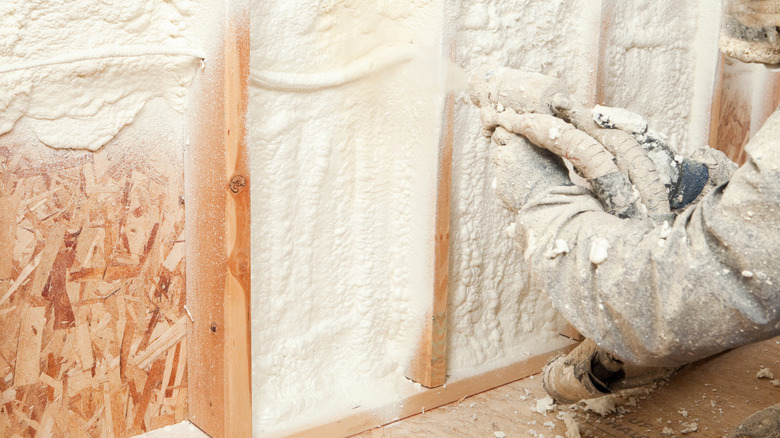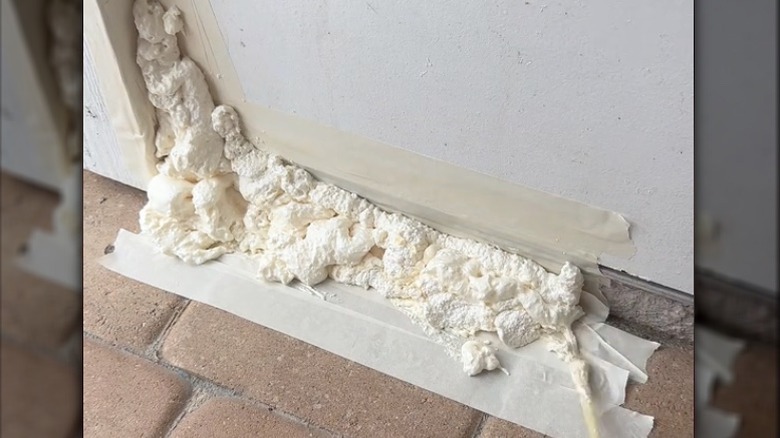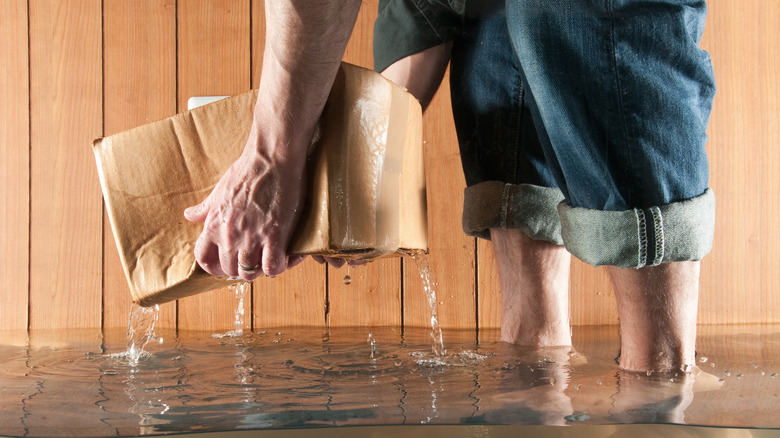Keeping Water Out Of The House With Spray Foam: Fact Or Fiction?
We may receive a commission on purchases made from links.
Using spray foam to keep water out of the house seems like a great idea, particularly as spray foam can be relatively easy to apply in awkward areas. There are several videos online that appear to support the hack but finding out later that it doesn't actually work could be a very unpleasant and expensive lesson. So, is it fact or fiction?
Actually, there are elements of both, and we're going to delve into the details in a moment. Before we do, it's important to have a little background information. It's easy to assume that videos showing spray foam are all on the same subject, but in fact there are two quite different spray foam techniques being discussed and demonstrated.
One talks about insulating foam that is normally sprayed by commercial installers in crawl spaces and basements. The other one relies on a hand-held can of foam, suggesting it can plug gaps to prevent water leaking through your front door. Both claim to help stop water seeping into your home and causing damage, but quite rightly, neither claims to keep your home safe from a flash flood.
How spray foam will (or won't) prevent water getting into your home
Over on YouTube, the representative of a spray foam insulation contractor, RetroFoam of Michigan, tells us that, in fact, closed cell foam can stop water leaks in some cases, but that's not its primary function. In his opinion, a separate sealer should be applied first. Other professional sources agreed that although spray foam insulation can keep water from getting into your house, it is not a dedicated waterproofing product and should not be relied on to do that job. A product like Liquid Rubber's Foundation and Basement Sealant (available from Amazon) should be applied before a spray foam insulation layer.
On TikTok, content creator @shelbmess24 can be seen using masking tape and a can of DIY insulating foam to seal gaps around a door as hurricane prep. Anyone who has used a can of expanding foam can tell you how awkward it is to direct accurately, and @shelbmess24 does seem to struggle. Commenters also suggest that water would simply run under the masking tape. The video only shows a small portion of the door being covered, and while the creator claims to normally cover the whole door, doing so would be very time-consuming. So, while the advice gleaned from TikTok might work, it does seem more fiction than fact.
Proven ways to keep water out of the house
So, it's a fact that professionally applied spray foam may prevent water from getting into your house, but the strategy shouldn't be relied on. But fortunately, there are a number of budget-friendly ways to keep water out of your basement, and if water in the yard is a regular problem, you could consider installing a French drain. These allow the rainwater to flow away from the house. Building a French drain is something you can take on yourself if you're a keen DIYer; otherwise, you can let landscape professionals tackle the project for you.
A regular maintenance routine can help stop problems before they get started and is particularly useful if your home is in a known flood zone. Clean out gutters so water can run away freely rather than pour over the sides and get into the foundations or basement. Consider gutter extensions if water pooling close to the house is a regular problem. Check windows and doors. Weather strips that provide an effective seal are widely available and very affordable. While it's a fact that some spray foam products can help keep water out of the house, it is fiction to expect them to be the only course of action you need to take.


